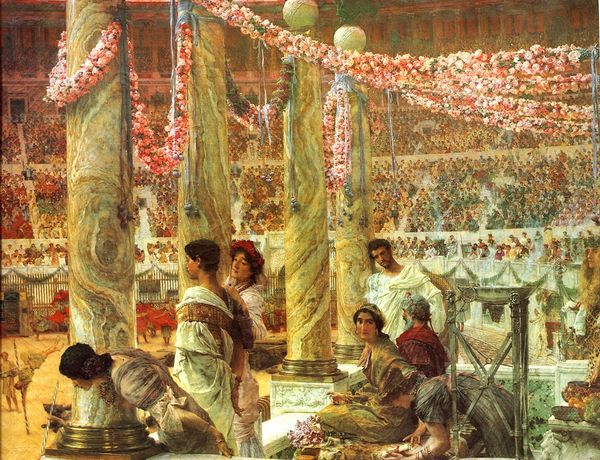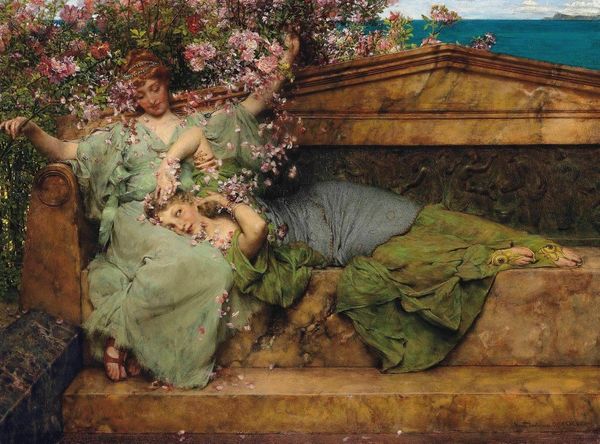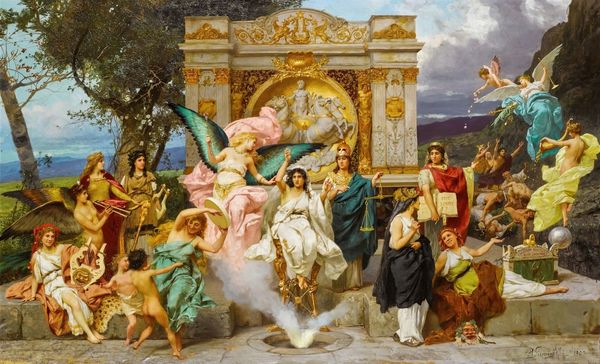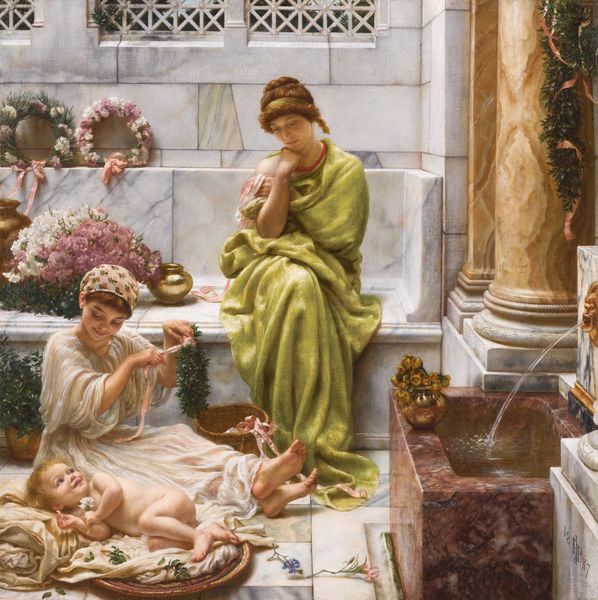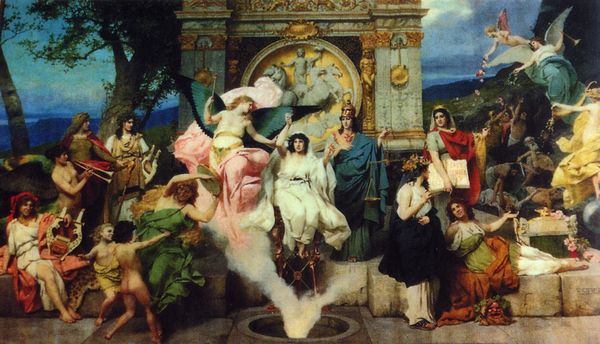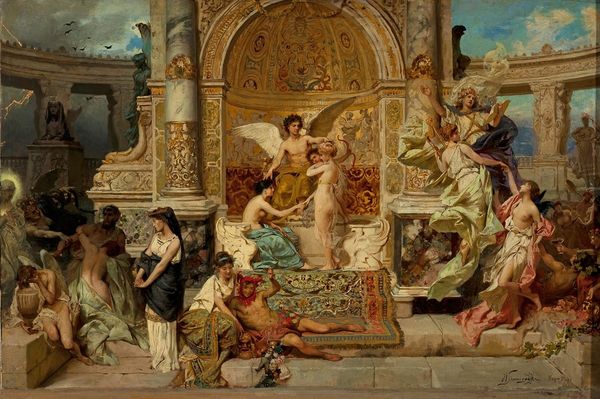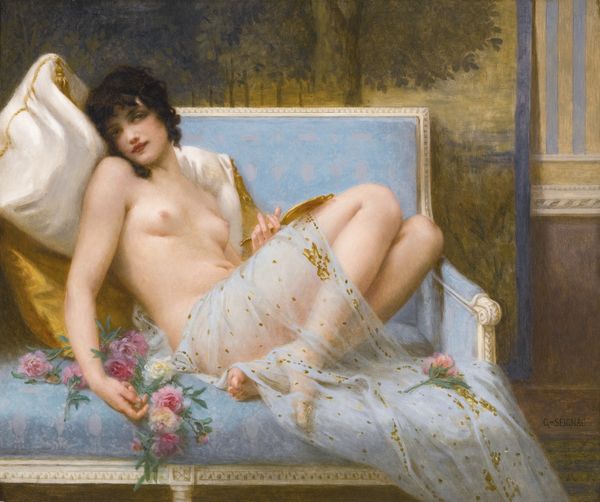
oil-paint, textile, ink
#
oil-paint
#
textile
#
figuration
#
romanesque
#
oil painting
#
ink
#
genre-painting
#
history-painting
#
academic-art
#
realism
Dimensions: 213.9 x 132.1 cm
Copyright: Public domain
Curator: Well, hello there! Take a look at Lawrence Alma-Tadema's painting, "The Roses of Heliogabalus", from 1888. Editor: What a scene! The overwhelming abundance of pink creates a dreamlike, yet claustrophobic, atmosphere. Curator: Alma-Tadema was a master of historical genre painting, meticulously researching and recreating scenes from ancient Rome. He paid obsessive attention to detail and the precise rendering of materials. In this particular scene, flowers cover all visible floor surfaces of the room. Editor: It’s quite striking, yes, but what exactly are we looking at here? And who were the people? One can consider how this excess reflects contemporary socio-economic disparities, especially during a period of rampant industrialization and class divisions in Europe. Curator: Precisely. It depicts a banquet of the Roman Emperor Heliogabalus, who is said to have smothered his guests with masses of violets and other flowers. We can understand this work through a materialist lens, thinking about what kind of flowers would have been sourced to make it. Heliogabalus ruled at the peak of Rome, but this is near the end of his life, as it will lead to his death later. The amount of roses that were collected speaks volumes to the vast resources they were wasting. Editor: The painting serves as a commentary on unchecked power and decadence. Note how those higher on the platform remain largely untouched by the "flower bath", watching as others suffer. This symbolizes their detachment from the consequences of their actions and those beneath them. Furthermore, this piece certainly invites conversation around how history remembers women. Curator: Right. You have a very precise way of seeing the context within the material composition. Look at the way Alma-Tadema portrays the textures, not only of the rose petals but the marble, fabrics, and skin tones. The labor involved in capturing such details is truly remarkable. He had many studio assistants whose work went underappreciated. The labor of the models also must be considered as well, in an intersectional sense. Editor: Yes, this image forces one to reflect on labor. On that note, to think that while these flowers signify transient beauty, their abundance also hints at the emperor's tyranny and, frankly, barbarity... it adds a new dimension to how one might understand and interpret history. Curator: Absolutely. Thanks to both the detailed craftwork in the piece and a new lens from the work of people such as yourself, the piece speaks in ways it might not have before. Editor: It certainly does. A complex and very memorable depiction that merges beauty and brutality to encourage modern examination of power.
Comments
No comments
Be the first to comment and join the conversation on the ultimate creative platform.
